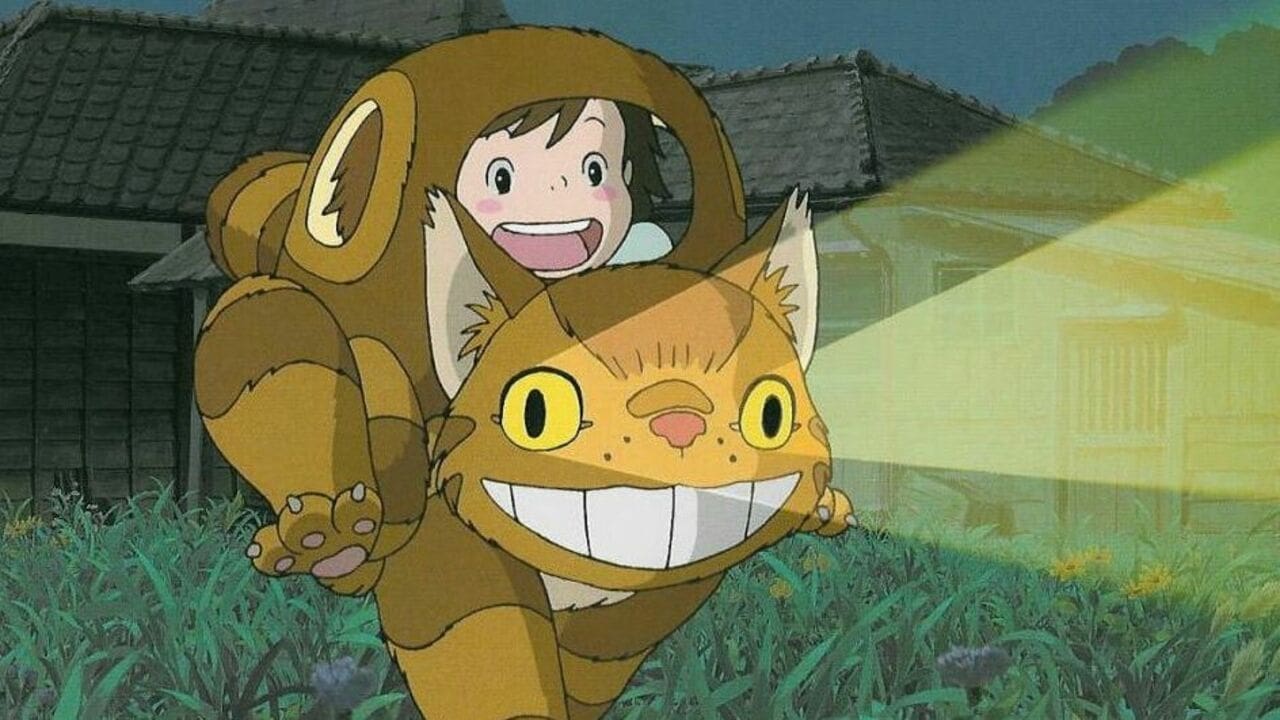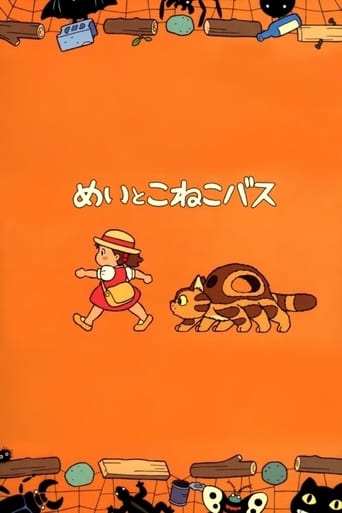



It is a performances centric movie
An action-packed slog
A Major Disappointment
It's a movie as timely as it is provocative and amazingly, for much of its running time, it is weirdly funny.
View More"Mei and the Kitten Bus" is a 13-minute animated short film from 13 years ago and it can only be seen at a museum in Tokyo, if you don't count recordings from that location that some people may have put online. It was written and directed by Academy award winner Hayao Miyazaki and it is very obvious from the animation style that this is a Studio Ghibli production. Actually, it is closely linked to the 1980s movie "My Neighbor Totoro" and may be a good watch for everybody who enjoyed that film. I have not seen it, so I cannot go into further detail here. Anyway, the story is fairly forgettable, but the film is mostly memorable for the nice animation style that is exciting and harmonic at the same time and the good soundtrack. Still, I must say I find the animal creatures in Studio Ghibli films always a bit scary with their constant grinning. But that is just personal perception. As a whole, this was a decent movie. Not a truly great one, but worth the watch, especially for people who like Miyazaki's work.
View MoreMei to Koneko basu (Mei and the Kitten Bus, 2002) is an enjoyable animated short with lovable characters, couple of them already known from Tonari no Totoro (My Neighbor Totoro, 1988) feature-length movie, and a number of newly introduced ones. A kind of spin-off of the original movie, this 13-minute short can be seen only in the Studio Ghibli Museum in Mitaka, western suburb of Tokyo. (And what a delightful visit there it was, 20 months ago, almost to the day, in May 2009.) Story revolves around 4-year old Mei Kusakabe (this time without her older sister Setsuki, making here only a brief appearance) who befriends and babysits Koneko basu (Kitten Bus), the offspring of the Neko basu (Cat Bus), often compared to the Cheshire Cat from Lewis Carroll's classic Alice in Wonderland. Spacious hardly enough to accommodate solely little Mei, Koneko basu takes her on a night ride, and flies her in and out of the forest to get her acquainted with the whole fleet of cat-shaped and spirited vehicles, serving their Totoro passengers, to meet sort of a big cat-liner, Neko Bâ-chan (Granny Cat Bus), and revisit the great O-Totoro itself, largest among the spirits "keepers of the forest".Film offers many favourable ingredients contained in Miyazaki's other, mainly hand-drawn animated adventures: humorous, colourful characters, including child(ren), often girl(s) protagonist(s), character driven animation, subtlety in timing and movements, enchanting visuals with watercolour-like backgrounds, actions involving flying... Lack of subtitles, to otherwise favourable original Japanese soundtrack, for a non-Japanese speaker (Nihon-go wakarimasen!) was not detrimental at all, because it's not about the story told in words, anyway, but about telling it in "thousand times" more descriptive pictures, worming up the feelings, playfulness and imagination omnipresent in children, and, though seemingly forgotten, eventually only suppressed in grown-ups, ergo dormant potential that can be easily activated through the well-administered incentive from the skillful wake-up caller. And who could do it better than a master storyteller, rarely multitalented to simultaneously write, animate (draw), direct and produce at the highest level, whose desire is not exhausted in the process of storytelling, since he prefers to participate and play himself, "suspected" and excused for finding in it as much fun as children do. And, in doing so, he entertains the same desire in us, spectators on the receiving end of his generous and exuberant offer, until, smitten all along, we find the pure joy of it all... ourselves.Author of, apparently, one of Miyazaki's favourite books for children, Pippi Långstrump (Pippi Longstocking), Sweedish writer Astrid Lindgren used to say: "I don't 'mean' anything by my writing. I just write for the child in myself." It is unlikely that Miyazaki doesn't 'mean' anything by his great and comprehensive anime movie output (Specially in his feature-length movies, his references to contemporary global issues are quite obvious: burning requirement for scaling down the speed of exploitation of natural resources, harmonizing it with the capacity of existing reserves, and allowing for their renewal, improving ecological awareness and reducing pollution, peaceful reconciliation of hostilities ), though it is easily understood that he does the movies for the playful and curious child in himself, as well perhaps--and why not--above all.Judging by loud ovation from the highest represented, otherwise traditionally self-controlled, if not self-restrained, Japanese children and their parents present at the screening in Ghibli Museum theatre: kids love it and adults enjoy it!
View MoreI had the pleasure of visiting the Studio Ghibli Museum this past April (2009) and saw this wonderful short by Miyazaki. It's only shown at the Museum, so to see it you'll have to visit Tokyo and make sure you make a reservation months in advance.This 20 minute short takes place in the world of Totoro, though it is unclear whether events are occurring in the same time frame as Totoro, or after wards. In the film, Mei is visited by a "Kitten Bus" (Koneku Basu), that seems to be the child of the cat bus from Totoro. The kitten bus takes her on adventure to meet what turns out to be a very large family of cat buses including a grandfather bus. Really not much more to it than that. Totoro makes an appearance, and Mei goes home.Like all Miyazaki films, the beauty and wonder is in the drawing and the characterization of children, specifically Mei. Her wonder at meeting the cat bus family is a sheer delight to watch and I found myself as delighted and filled with wonder as she is in the film. No animator (or possibly any film maker) today understands children like Miyazaki and it shines through in this film.If you can get to Tokyo, its worth the trip to the western suburbs.In Japanese without subtitles, but they're really not necessary.
View More